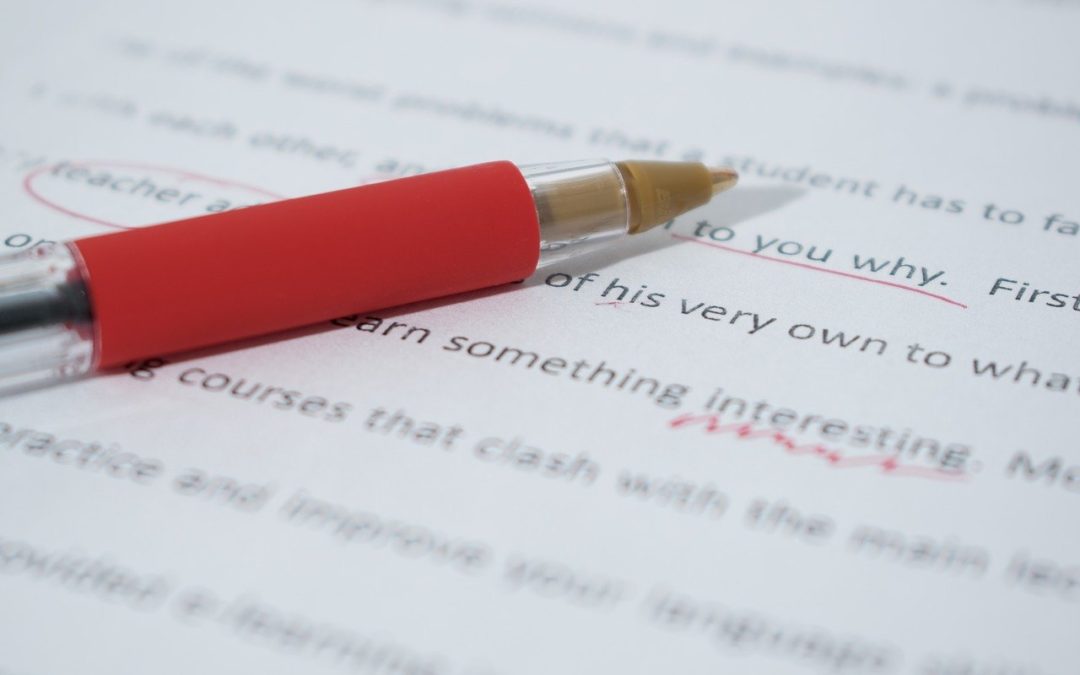It’s/Its, You’re/Your, Who’s/Whose, and They’re/There/Their
Part I
Whether it’s a snail-mail letter, an email, an office memo or even a text to your boss, correctness definitely counts in the professional business world. And it counts, big-time, if you’re looking to get promoted into that killer new position you’ve had your eye on for the past several months.
Back when I first started to teach business writing, would you like to guess what the most commonly misspelled word in the English language was? This would be in the pre-PC era. And no, I’m not that old! I started teaching business writing when I was only six. (Ahem. OK, maybe twelve.) People in my classes would guess all sorts of complicated things, like “separate,” “coincidence,” “vacuum” and “questionnaire.” However, the troublemaker was just a teensy, simple word. It was the misspelling of “a lot.” People used to spell it as one word, like this: “alot.” But even when I just now tried to type “alot” on my handy laptop, my Spell-check program autocorrected it and replaced it with “a lot,” and I had to go back and force it into a deliberate misspelling in order to show you what I’m talking about. Thus, the modern world witnessed the relatively quick and painless death of “alot” – you never even see it anymore, courtesy of advanced technology and Spell-check. (And I bet if you’re under the age of 30, it would never occur to you to spell “a lot” any other way – you’ve never seen the misspelled version.)
Unfortunately, Spell-check – and even Word, unless it detects something wonky in your syntax – won’t be able to help you with usage errors. In most cases, neither program will even blink an AI eye if you type an “it’s” for an “its.” You simply have to learn which words mean what, and how to use them correctly. So, here’s a two-part tutorial on the four most commonly mixed-up word groups in contemporary written English language. And no groaning, please. I promise we’ll have some fun along the way.
Let’s jump right into Part I. We’ll start the most common of the four mistakes…
It’s/Its
I see this one all the time, even in reputable magazines and newspapers, whose names I won’t mention. (Who needs enemies?) This one’s probably the most difficult word pair to unscramble, because of that menacing little apostrophe in “it’s,” and what we’ve come to think an apostrophe means when we see it. Yes, apostrophes can connote possessives, but they can also represent contractions, and you have to know the difference.
Whoops—did I go too fast? Do you need a quick refresher on possessives and contractions? No problem. And don’t get all threatened and click off of this article. I’m telling you, by the time we’re finished, you’re gonna have it all down cold.
Possessives vs. Contractions
- When an apostrophe is used to designate a possessive, it means that the word containing the apostrophe “owns” something else, like this:
Bill’s tuba
The bank’s security system
Mom’s hotrod
We could go way deeper here, but that’ll get you started.
- When an apostrophe is used to designate a contraction, it means that two words have been foreshortened into one, like this:
Won’t (will not)
Couldn’t (could not)
We’re (we are)
There are lots of contractions, including some weird, obscure ones, like shan’t, for “shall not”—but you’re not allowed to use that one unless you’re a certified 19th Century British novelist. (“So sorry, Old Chap, but I shan’t be dining with you and Lady Wellington tonight at the Officer’s Club …”) However, feel free to use common, mainstream contractions in your everyday business writing, as well as in your speech – they’re totally acceptable, and even encouraged in modern-day communication.
Now, after that quick (but important) digression, let’s go back to the “it’s/its” issue. In the end, there’s really only one foolproof way to know the difference, and it’s to memorize which word is which. Warning: don’t think about anything, don’t analyze anything, and don’t ask why. Logic won’t work for you here, so heads up:
“It’s” is a contraction for “it is” or “it has.” Always. Without exception. The end.
It’s a really nice day today. (it is)
I think it’s time for dinner. (it is)
It’s been a long time since I last saw her. (it has)
“Its” is a possessive, in which “it” owns something. (And don’t argue, even though you want to.) No matter how unfair it may seem, you never use an apostrophe to connote a possessive with the word “it.” That’s just the way it goes.
The canary is in its cage.
The cricket is singing its song.
Please put the flashlight back in its box.
Now, in case memorization isn’t your thing, there’s one other way to figure out whether you need an “it’s” or an “its” in your sentence: when you plan to write “it’s,” just say the sentence to yourself substituting “it is” or “it has” and see if it makes sense. For instance, in the “it’s” examples up above, if I substitute “it is” in the first sentence, it now reads, “It is a really nice day today.” No problem, right? But let’s say I incorrectly used an “it’s” in this example sentence: “The canary is in it’s cage.” Using my substitution test method, my new sentence would now read, “The canary is in it is cage.” (What the heck?) And presto! Instant verification that you need an “its,” rather than an “it’s,” in that sentence.
You’re well on your way to Usage Awesomeness, so stay with me.
In Part II of this series, we’ll tackle and untangle three other tricky word groups: who’s/whose, your/you’re, and they’re/there/and their. See you in three weeks!

